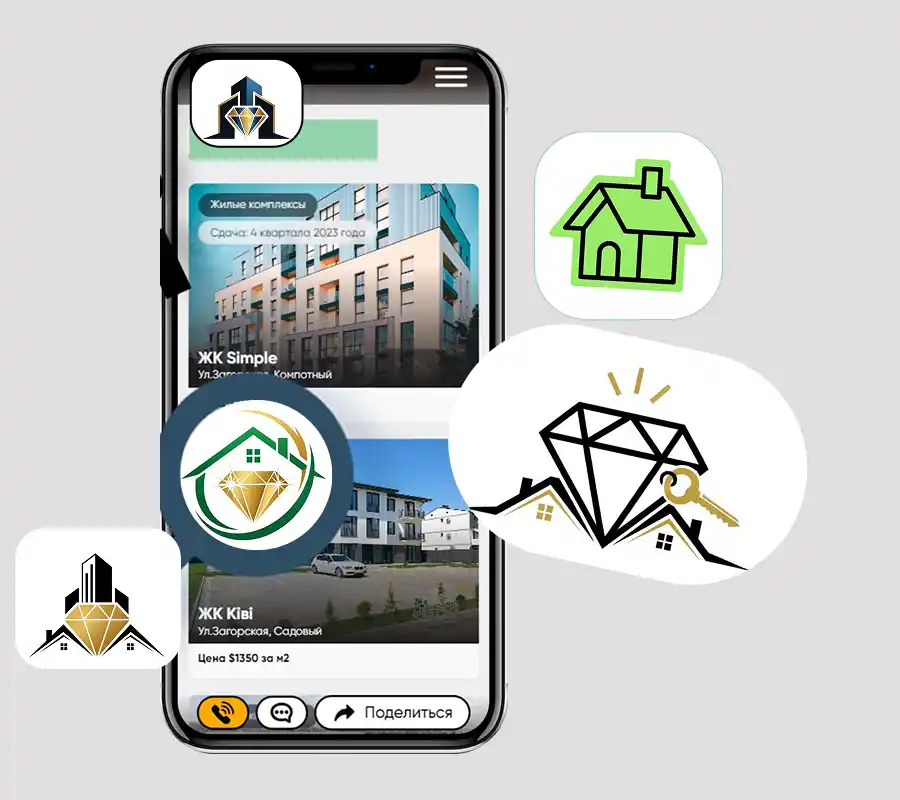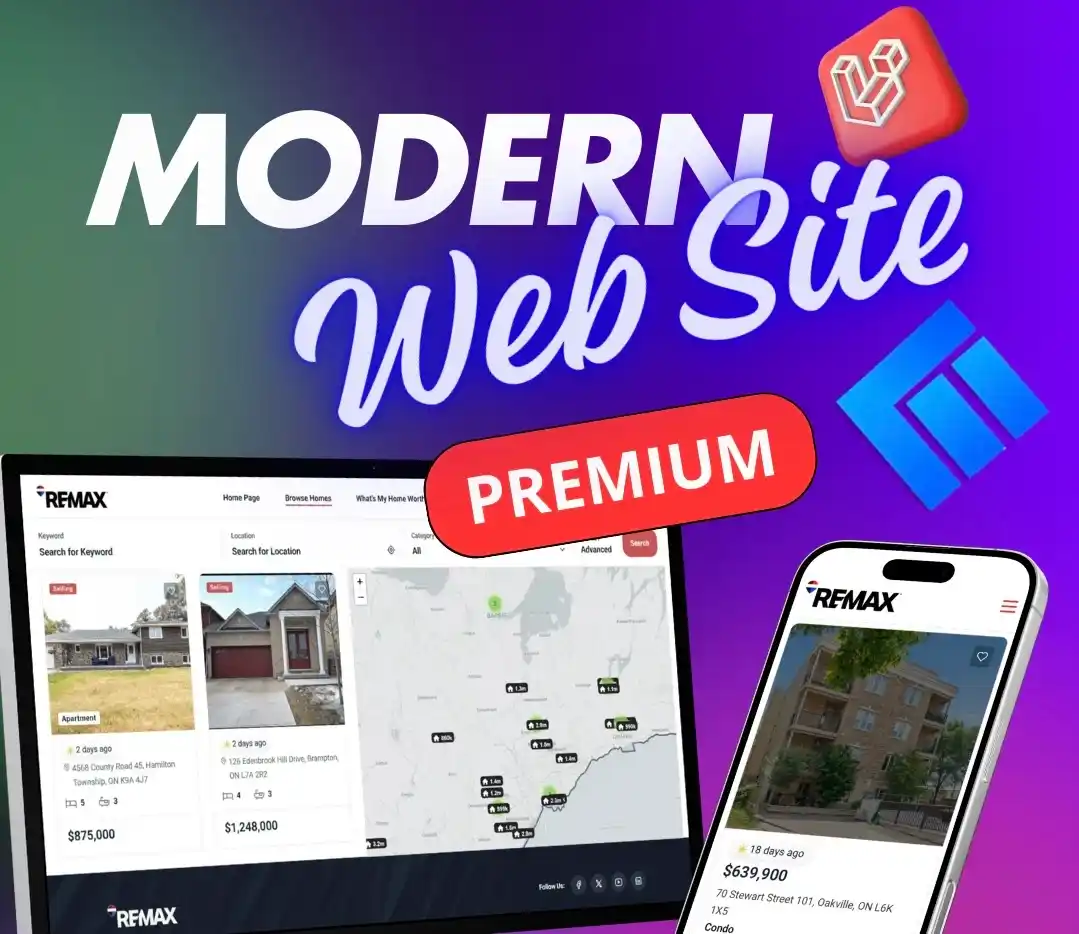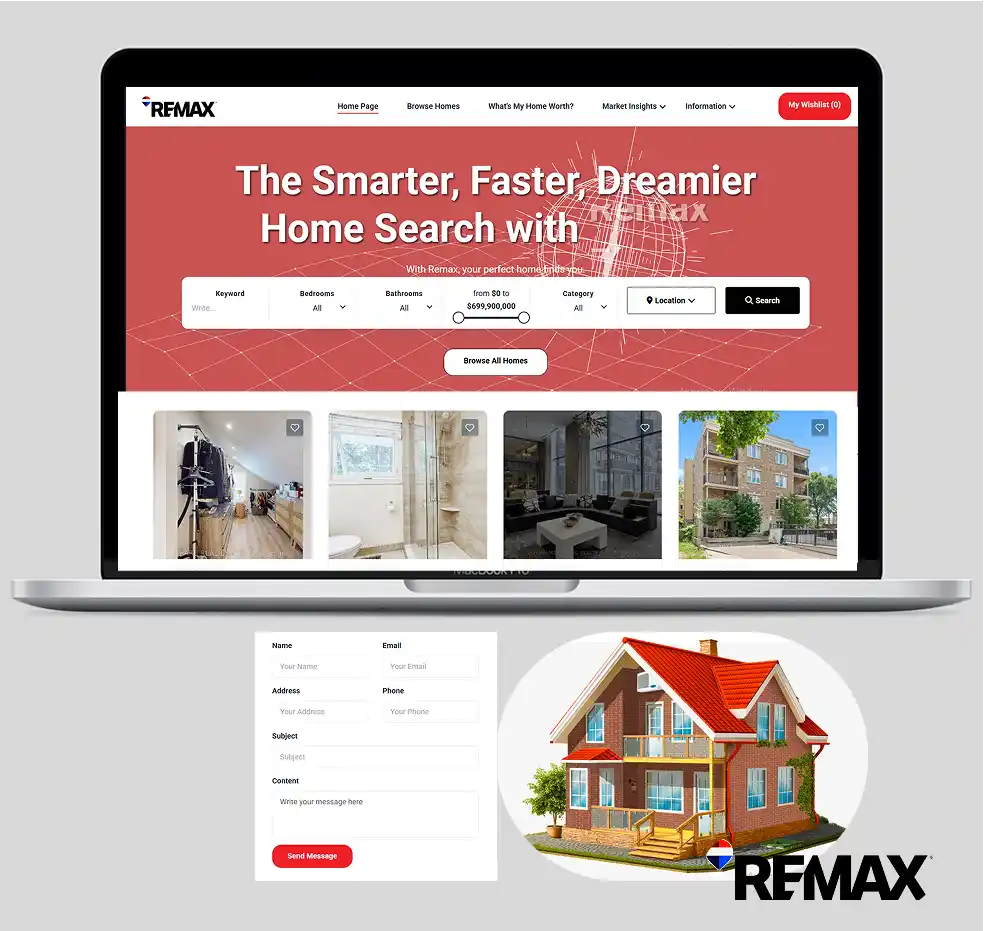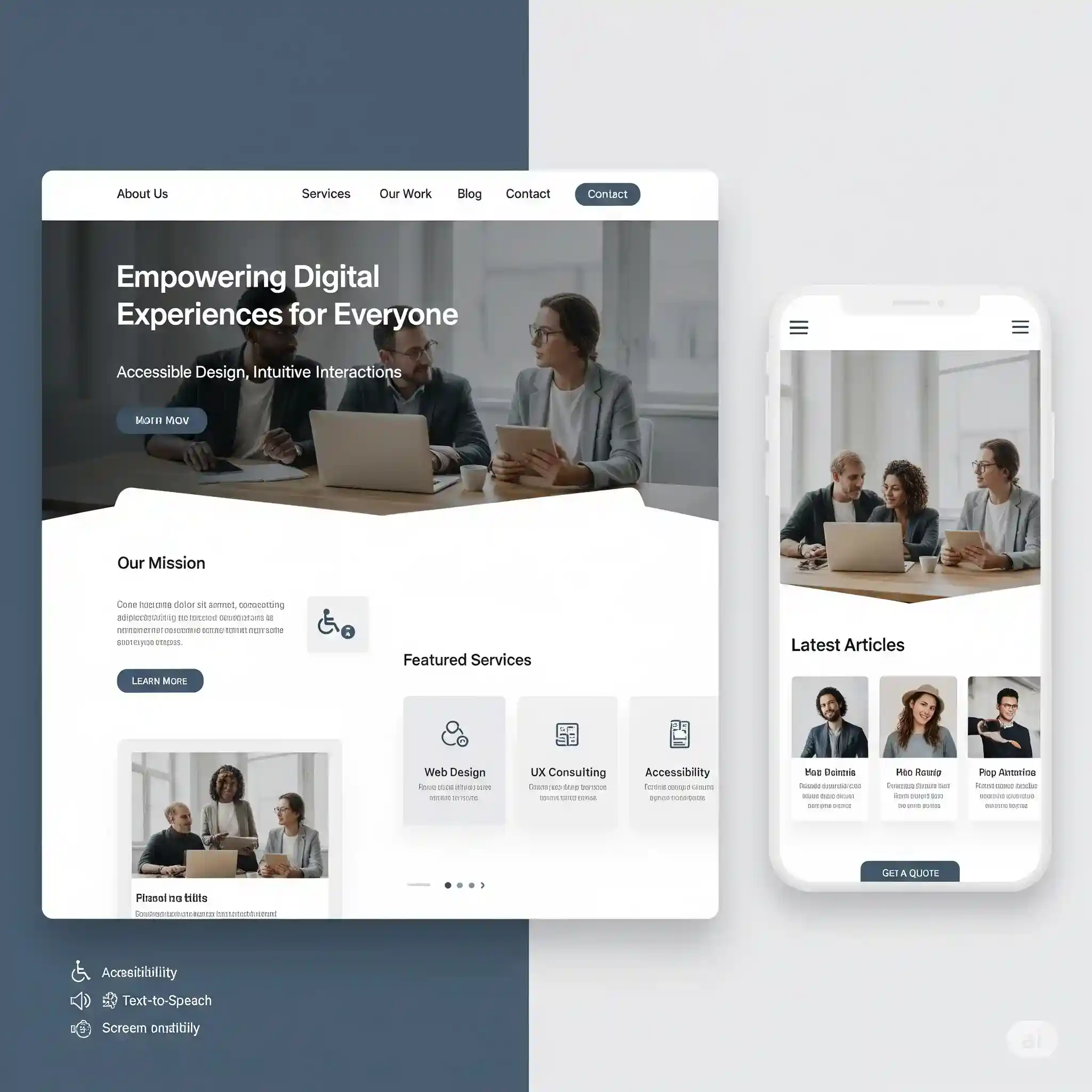
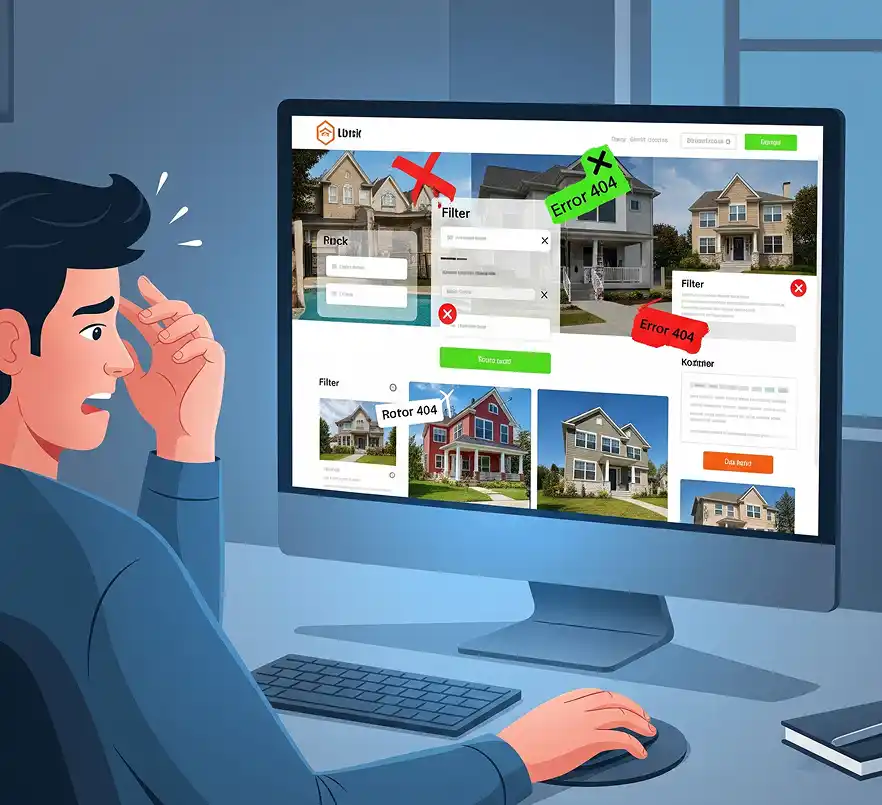
2025-09-16
Common UX/UI Design Mistakes on Real Estate Websites: Analysis of Problems and Solutions
Boost Sales with Better Web Design UX/UI Mistakes
Tags:
The article you've asked me to translate discusses how poor UX/UI design on real estate websites can deter clients. It breaks down the most common mistakes, such as outdated design, inconvenient search filters, and cluttered pages. The goal of the article is to help real estate professionals and developers understand the importance of good design in attracting and retaining customers. The translation maintains a professional and informative tone, suitable for its target audience.
UX/UI Design Mistakes That Drive Away Clients on Real Estate Websites: An Analysis of Common Problems and Solutions
In the modern world, where competition in the real estate sector is incredibly high, your website isn't just a business card—it's a powerful sales tool. Outdated design, inconvenient search, and cluttered pages don't just annoy people; they make potential clients close the tab and move on to your competitors.
In this article, we'll examine the key UX/UI design mistakes on real estate websites that impact conversions and offer practical solutions to ensure your resource works for you, not against you.
1. Outdated Design: A Visual Barrier to Trust
The Problem: Your website looks like it was designed 10 years ago. The use of old fonts, dull colors, awkward animations, and inefficient use of space creates an impression of irrelevance and low quality. This undermines trust in your agency or developer.
Why It Drives Away Clients: The modern buyer expects professionalism at every level. If your website design doesn't meet 2024 trends, a client might think your company isn't keeping up with the times and can't provide high-quality services.
The Solution:
- Minimalism: Opt for a clean, minimalist design with plenty of "white space."
- Brand Style: Use a modern, visually pleasing color palette that matches your brand.
- Quality Photos: Instead of low-quality photo galleries, integrate professional images and 3D virtual tours. This allows clients to experience the property without leaving their home.
2. Inconvenient Search and Filtering: "A Needle in a Haystack"
The Problem: Your client wants to find a 2-bedroom apartment in a specific area, but they have to scroll through hundreds of pages to find the right option. Inconvenient filters, the lack of sorting by price or area, and slow search are major pain points.
Why It Drives Away Clients: Finding a home is an emotionally taxing process. If your website complicates this task, the client will simply leave. An inconvenient search experience lowers the bounce rate and negatively affects SEO.
The Solution:
- Smart Filters: Implement detailed filters for all key parameters: number of bedrooms, area, price, neighborhood, and building type (new build/resale).
- Interactive Map: Add the ability to search for properties directly on a map. This is extremely convenient for those looking for real estate in a specific micro-district.
- Sorting: Be sure to add sorting by price (low to high/high to low), area, and date added.
3. Cluttered Pages: "Information Overload"
The Problem: A property listing page contains too much information: multiple small text blocks, unstructured tables, confusing icons, and ads. It's difficult for the client to find key information like price, location, and contact details.
Why It Drives Away Clients: A cluttered design creates a sense of chaos and distracts from the main goal—viewing the property. This can cause cognitive overload, leading the user to leave the site quickly.
The Solution:
- Clear Structure: Organize information into logical blocks: a gallery, key features (price, area, rooms), a detailed description, and a map location.
- Highlight Key Info: Use a larger font to highlight the most important information, such as the price.
- Use Icons: Instead of long texts, use concise icons to represent key features (e.g., icons for an elevator, parking, security).
Conclusion: How to Gain an Edge Over Competitors
In the real estate sector, where every client is valuable, ignoring UX/UI design is a critical mistake. A well-thought-out and user-friendly interface isn't just a "pretty wrapper"—it's a strategic investment in your business.
Professional website development and design with a focus on UX/UI will ensure:
- High conversion rates for inquiries.
- Increased trust in your brand.
- A lower bounce rate.
- Improved search engine rankings.
Don't let outdated design hinder your business. Invest in quality and functionality to stand out in the market and attract more qualified clients. If you're looking for an experienced partner to develop a real estate website that meets modern standards, explore professional web development and design services.
Last News.
AI Manager Bob
Hi! Let's find the perfect solution for your business!

Select service type
Websites
Systems
Design
Mobile Apps
Promotion
Other
In which industry is your business?
E-commerce
Finance & Banking
Medicine & Health
Education
Real Estate
Entertainment & Media
Food & Restaurants
Other
What type of project do you need?
What is your project budget?
Do you want to choose technologies for the project?
Leave your contact details and our specialist will contact you to clarify details and offer the optimal solution.
What features should the project have?
CRM system
Online payment
Personal account
Product catalog
API integration
Analytics
Chat/Support
Mobile app
Blog/News
Booking system
Multilingual
Site search
Reviews/Ratings
Notifications
Data export
Data import
Subscriptions
What technologies interest you?
Laravel
Yii2
CodeIgniter
Symfony
CakePHP
PHP
Node.js
Django
Flask
Spring Boot
.NET Core
Express.js
NestJS
Golang
Solidity
Next.js
FastAPI
JavaScript
React
Vue.js
Angular
Svelte
jQuery
Nuxt.js
Backbone.js
Meteor.js
Solid.js
TypeScript
WooCommerce
PrestaShop
OpenCart
Shopify
Drupal
Magento
WordPress
Webflow
BigCommerce
React Native
Flutter
Kotlin
Swift
What additional services are needed?
Design
Branding
SEO promotion
PPC advertising
Technical support
Hosting
Copywriting
Analytics
Testing
Training
Content management
Security
Technical audit
SMM promotion
AR/VR development
Chat bots
Automation
Consulting
Almost done!
Leave your contact details and our specialist will contact you to clarify details and offer the optimal solution.
We guarantee the confidentiality of your data.
Leave your contact details
WhatsApp
Telegram
Viber
Email
Thank you for your request!
Our specialists will contact you within 24 hours to clarify details and offer the optimal solution.

_11zon_11zon.webp)
